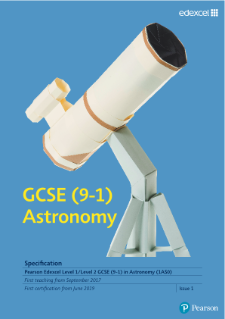
Aided Observations
As part of their Astronomy GCSE, students must complete an aided observation.
The use of robotic telescopes is both acceptable and encouraged by Edexcel. An increasing amount of professional astronomy is now carried out using robotic telescopes that do not have an observer or operator at the actual telescope site. This change in the GCSE Astronomy reflects the change in the professional world of astronomy.
For guidance on taking suitable observations with our Go Observing system, watch our video guide.
We provide projects for students to follow, that fulfill requirements set out in the list of approved Observational Tasks B1 and B11
View our short online CPD session on using the Liverpool Telescope for GCSE Astronomy Observational Tasks B1 or B11.
Information on how to get your students started using the Liverpool Telescope.
Resources
This online textbook supports students to learn, understand, and revise the topics covered in the GCSE Astronomy specification. The knowledge supports students to design, make, analyse, and evaluate unaided observations.
Paper 1: Naked-eye Astronomy
- Planet Earth
- The Lunar Disc
- Solar System Observation
- Celestial observation
- Planetary motion and Gravity
- Use of mathematics
Paper 2: Telescopic Astronomy
We provide workshops to support teaching topics in Paper 2 and including the use of mathematics:
- Barnard's Star - movement and velocity
- Sunspot data - understand the solar cycle
- Kepler's Laws - how they relate to the Solar System, and also exoplanets
- Hubble Flow - recreate the work of Edwin Hubble.
- Galaxy Classification - use the Hubble Tuning Fork
